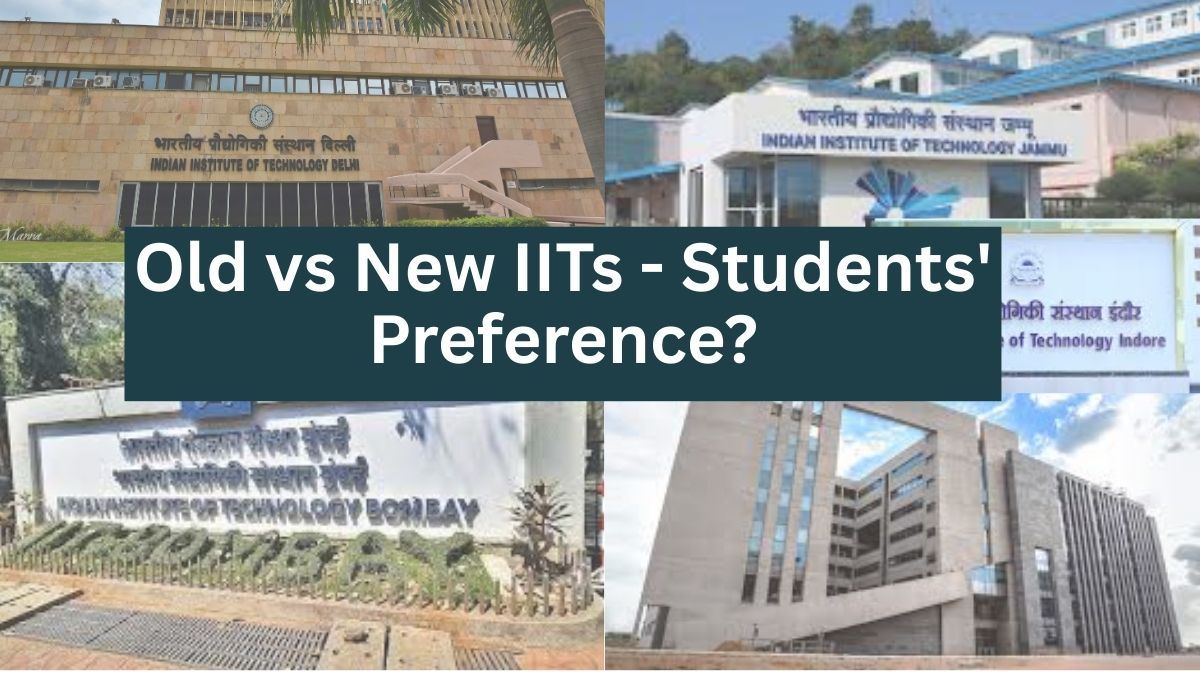Old vs New IITs: Toppers Tilt Toward Old IITs, Data Confirms
Joint Implementation Committee released the JEE report 2025. The report provides statistics on the examination and admission process, including the seat allotment at IITs. The data explains how students prefer older IITs to the newer ones. Let'us understand why older IITs maintain their legacy.
According to the recent data published by the Joint Implementation Committee (JIC), 9 new IITs failed to get the top 2000 JEE Advanced 2025 rankers. IIT Bombay leads with the highest share of top rankers. It remains the undisputed first choice for toppers, especially for top 100 rankers, followed by IIT Delhi and Madras. Kharagpur, Kanpur, and Roorkee dominate the middle bands, and among newer IITs, Hyderabad shows promise. The newer IITs are seen struggling to attract top students. IIT Delhi, Kharagpur, Madras and Kanpur are the next preferred institutes. IITs such as Hyderabad, Indore, Ropar, etc saw a fair amount of students. IIT Palakkad, Goa, Jammu, Dharwad, the newer IITs lag behind.
Old vs New IIT Debate Settled: Toppers Choose Legacy Institutes
Out of 5000, 4661 top rankers have taken admission into IITs (some gap possibly due to withdrawals or ineligibility). Older IITs- Bombay, Delhi, Kharagpur, Madras, Kanpur, Roorkee, Guwahati, BHU, ISM Dhanbad monopolise. The top 3 IITs (Bombay, Delhi, Madras) alone account for 39% of the allotment, approx. Top 5 IITs, Bombay, Delhi, Madras, Kharagpur, Kanpur, together recorded 57% of the students, approximately. The distribution across the top 3 preferred IITs is given below:
- IIT Bombay- 755 students, including 73 in the top 100 and 105 in the top 200.
- IIT Delhi- 577 students, with 19 in the top 100 and 44 in the top 200.
- IIT Madras- 478 students, including 6 in the top 100.
These three institutes consistently attract high-rankers. But together, the older IITs account for approximately 87% of the top 5000 admission. The newer IITs like Indore, Hyderabad, Ropar and Jodhpur attract fewer top rankers.
IIT Preference of the Top 100
IIT Bombay is the top most choice, with 73 out of the top 100 choosing it. IIT Delhi attracts 19, while IIT Madras gets 6. No other IIT secures any significant share in the Top 100. Institutes like IIT Kharagpur (517), IIT Kanpur (448), IIT Roorkee (429), IIT Guwahati (305) and IIT BHU (258) are strong in the 1000-5000 bracket, showing that they remain popular but less so for the top 200 ranks.
New IITs Intake Highlights
- IIT Mandi, Jodhpur, Dhanbad, Gandhinagar and Patna have very few top 1000 rankers, but students below 2000 rank.
- IIT Guwahati stands out as a strong performer among 2nd-tier old IITs, with 48 students in the top 1000 and 305 overall.
- IIT Hyderabad (222) is the most successful among the new IITs, showing growing preference.
IIT Bombay has become default “dream IIT” for toppers, especially in CS/ECE. The high concentration creates a prestige cycle- toppers choose IIT Bombay, which enhances it's brand, further attracting future toppers. Location plays a role as students often prefer IITs that are closer to economic hubs such as Mumbai, Delhi and Bengaluru. Institutes in smaller or less urban regions have a natural disadvantage. Prestige is deeply connected to legacy, alumni networks, and experienced faculty. New IITs should specialise in niche research areas to stand out (like IIT Hyderabad in AI/5G). Institutes like IIT Kharagpur (517), IIT Kanpur (448), IIT Roorkee (429) and IIT BHU (258) attract more students between 2000-5000 ranks than the top 200 rankers. These IITs are still popular, but not necessarily “dream IIT” for toppers. They get a huge volume of admissions from mid-ranked students rather than toppers.
Yes. JEE Advanced syllabus is different from JEE Main syllabus. Candidates must doenload the JEE Advanced syllabus from the official website.
Inorganic Chemistry by O.P. Tandon
This book is more suited for students who are preparing for JEE Mains and Advanced.
Inorganic Chemistry by J.D. Lee
This book is considered more advanced and is highly recommended for JEE Advanced preparation.
👉Read more: JEE Apex Board (JAB) Reconstituted for JEE Main and Advanced 2026, 2027
IIT Hyderabad’s Rising Popularity
222 students chose IIT Hyderabad, which is more than many older IITs like Gandhinagar (87), ISM Dhanbad (90), and Jodhpur (63). It performs better than expected for a new IIT, reflecting strong industry linkages (AI, tech startups, Japan collaborations). Its success shows that location and niche academic strength can overcome “new IIT” disadvantage.
Key Takeaways for IIT Aspirants
- Students aiming for CS/EE in top IITs (Bombay, Delhi, Madras) must secure JEE Advanced ranks between 200-500.
- Those with 1000-5000 ranks still get good options in Kharagpur, Kanpur, Roorkee, BHU, and Guwahati.
- New IITs are fallback options mainly after ranks after 2000.
- Students with mid-ranks should carefully prioritise between old IITs’ less popular branches vs new IITs’ CS/ECE.
- Wherever top 200 choose to go, those IITs dominate future research, placement, and global ranking. Students must strategise depending on rank; a student should balance prestige vs branch, vs location.
Follow Shiksha.com for latest education news in detail on Exam Results, Dates, Admit Cards, & Schedules, Colleges & Universities news related to Admissions & Courses, Board exams, Scholarships, Careers, Education Events, New education policies & Regulations.
To get in touch with Shiksha news team, please write to us at news@shiksha.com

Samridhi Mishra is a well-established content strategy expert and writer in the Indian engineering education sector. She is dedicated to providing exam news, prep tips, and counselling advice that help aspirants in
Read Full BioComments
Latest News
Next Story
